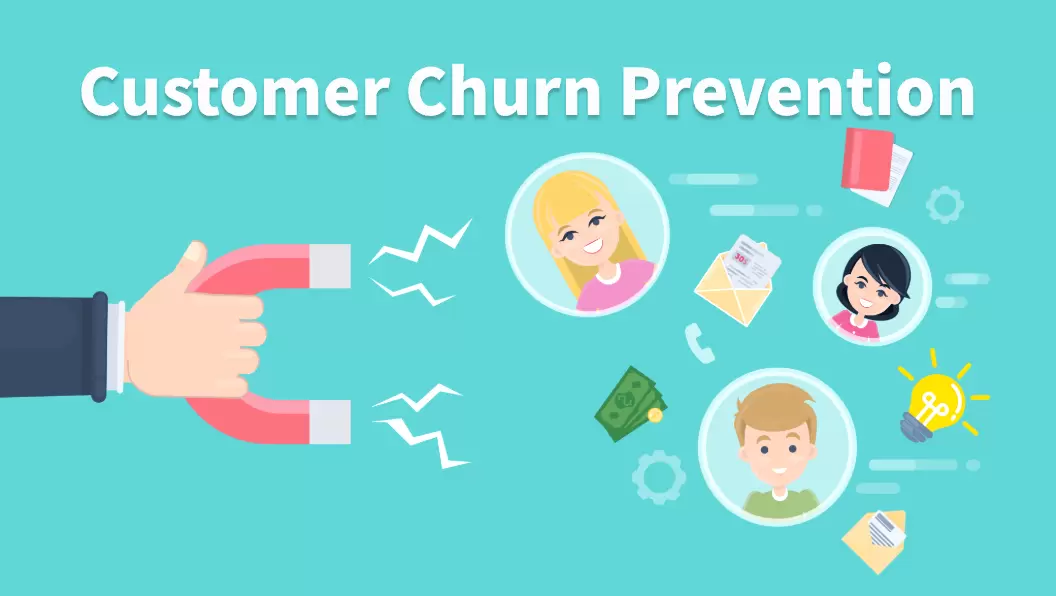Push notifications have become an essential part of any business communication strategy with good reason. No matter if you are running a SaaS platform, an e-commerce store, or a B2B app, the right push notification example can showcase impressive results like improved user retention and conversions.
Unlike emails or SMS, a push notification can deliver concise, actionable messages directly to your audience's device. For B2B companies, in particular, this means faster communication with decision-makers, more efficient customer engagement, and measurable impacts on key KPIs. Indicatively, it can actively contribute to a boosted click-through rate (CTR) and lifetime value (LTV and CLV).
We will unravel what an example of a push notification is through real-life scenarios .
What is a Push Notification Message Example
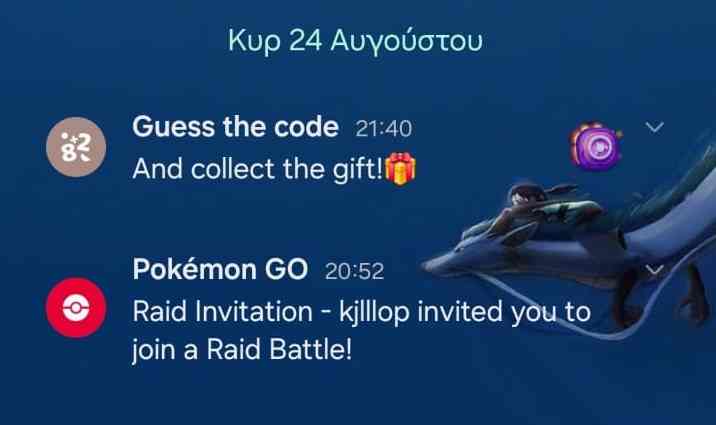
 Push Notification Definition
Push Notification Definition
A push notification is a short message sent from an app or website to a user's device, such as a desktop, browser, Android, or iOS. This type of communication is designed to be actionable, deliver timely information, and drive engagement. Therefore, a successful mobile app push notification example will boost your engagement KPIs and remind users of your brand.
Why Push Notifications Are Effective
A push notification is yet another channel to reach out to your audience, one that stands out from others like email or SMS. But what are its characteristics that make it so effective?
Let's break down why they're so essential for business communications:
- Instant Visibility: Unlike emails that can sit unread in an inbox, push notifications appear instantly on the user's screen. In fact, many will often be accompanied by a sound or vibration, making them difficult to ignore.
- Higher Engagement Rates: This type of message can achieve click-through rates significantly higher than email campaigns. For example, an Android push notification offering a time-sensitive discount might motivate users to act right away better than a promotional email.
- Permission-Based Communication: One of the main features of push notifications is that users must opt in to receive them, by enabling them during app install in Android, or granting explicit permission in iOS and web. This means that you are reaching an already warm audience that has chosen to stay connected.
- Psychological Triggers: The most successful mobile app push notification example creates a sense of urgency that makes users want to act immediately.
For a deep dive on push notifications, refer to EngageLab's blog with numerous articles on the topic, such as a guide to automated notifications.
Push Notification Examples Across Core Business Scenarios & Systems
But what is an example of a push notification? The answer to this question is the main focus of this section.
Firstly, we have to underline that a push notification shines when it is context-driven. A strong push notification message example connects to a user's needs in the right moment. Below, we explore the most important scenarios where push notifications deliver value to a brand, along with examples across different platforms.
#1 User Retention & Activation
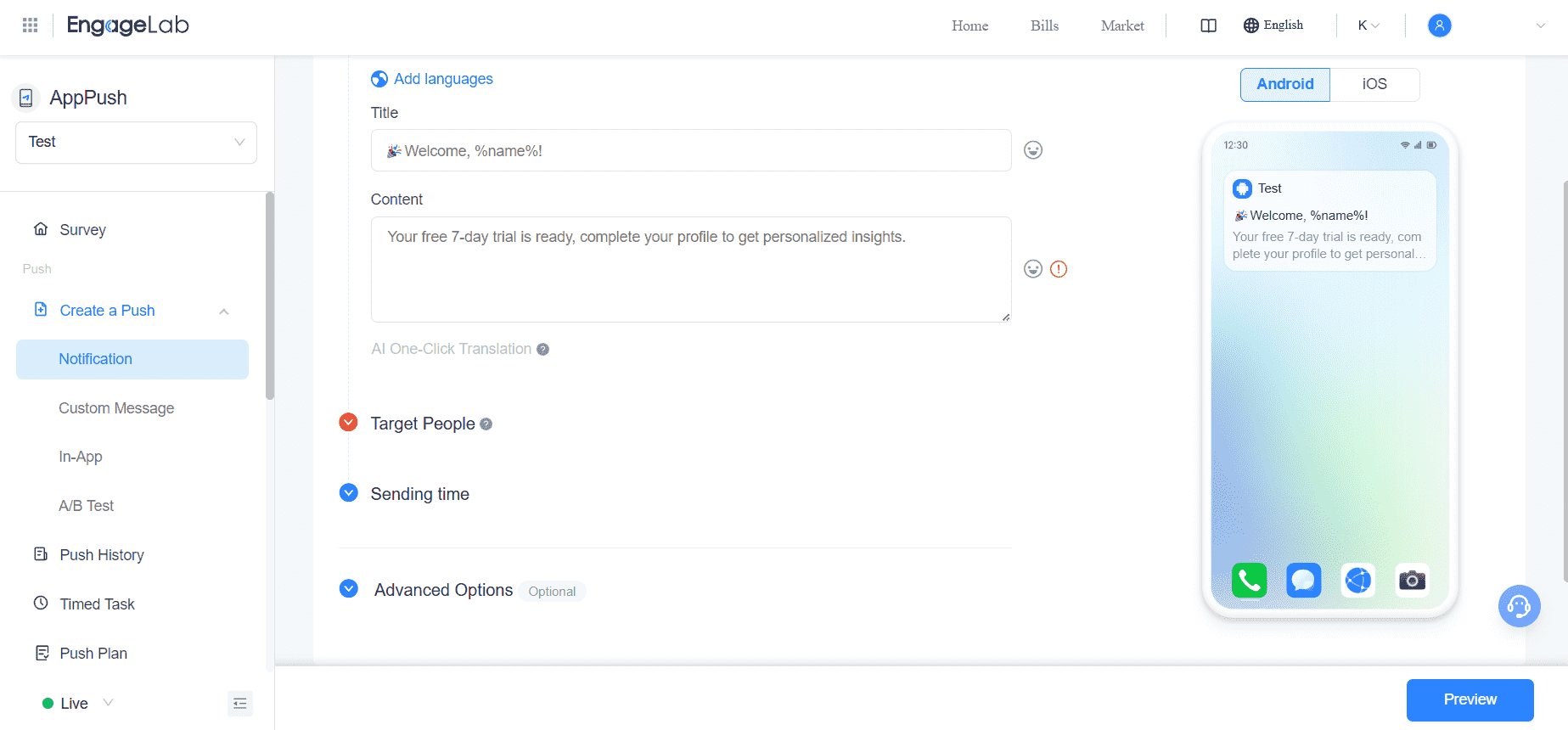
The first case where a push notification can bring significant results is during account activation. New users often install an app but fail to take the next step. Therefore, you can use this type of message to nudge them into action and ensure they see the value of your product.
Examples:
- Mobile App: "Welcome, %name%! Your free 7-day trial is ready. Complete your profile to get personalized insights."
- Web Push: "Don't leave your setup unfinished – activate your account today and unlock premium features."
- Android: "Turn on notifications to never miss project updates. Enable now with one tap."
- iOS: "You're almost there: Verify your email to start collaborating with your team."
#2 Conversion & Promotion

If you have an e-commerce app, then you can utilize an iOS or Android push notification example to promote more products to your customers. These notifications focus on turning interest into revenue by highlighting special offers, upgrades, or limited-time promotions. Furthermore, they can even introduce a whole new category of products to your customers.
Examples:
- Web Push Notification Example: "Limited Time Offer �: Save 25% on annual plans. Offer expires tonight."
- Android: "Flash Sale: 2 hours left! Tap now to grab 30% off your subscription."
- iOS: "Exclusive Deal! Upgrade today and save $10 on your first month."
- Mobile App: "New feature unlocked �. Upgrade to Pro and get instant access."
#3 User Re-Engagement & Win-Back

Dormant users need a personalized incentive to return. Therefore, a web push notification example with this goal needs to remind them what they liked about the app in the first place. For even more incentives, you can also offer some rewards.
Examples:
- Mobile App: "Hey %name%, it's been a while! Log back in today to claim 500 loyalty points."
- Web Push: "Your saved reports are waiting – see what's new since your last login."
- Android: "We've missed you! Tap here to continue where you left off."
- iOS: "Your account has been inactive for 14 days: Come back and explore our new features."
#4 Information & Status Alerts
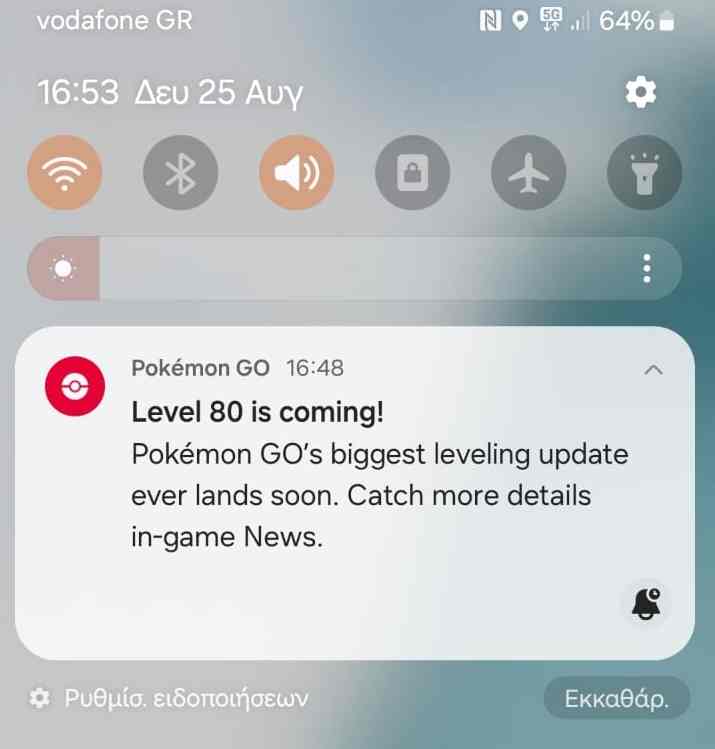
Another scenario where push notifications are ideal is for providing real-time updates and building up the hype. A common push notification message example includes system alerts, shipping details, and reminders.
Examples:
- Android: "Your order #8427 has shipped! Track your package in real-time here."
- iOS: "Reminder: Your webinar starts in 10 minutes. Join with one tap."
- Web Push: "Payment successful �. Your receipt is ready in your dashboard."
- Mobile App: "Your project deadline is tomorrow! Upload files now to stay on track."
#5 Content & Interaction Promotion
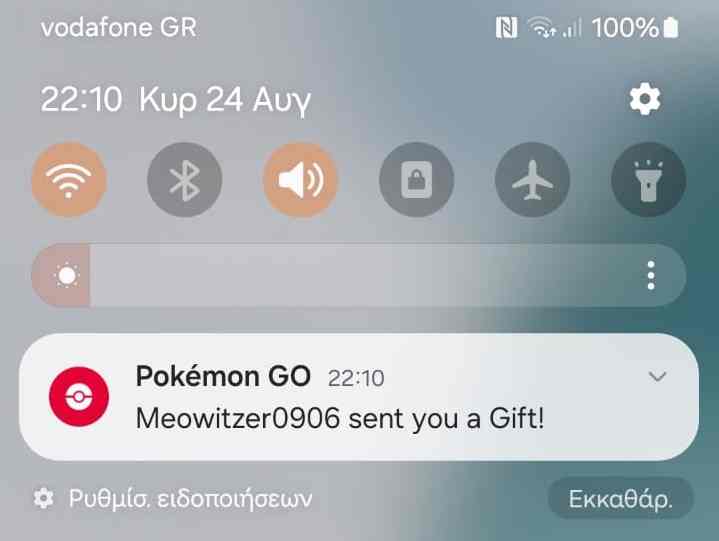
In many apps, users can interact with each other's posts. Therefore, you can utilize push messages to inform them. A mobile push notification example of this type focuses on new content in your app, or user comments, likes, and gifts.
Examples:
- Web Push: "New blog post: 10 ways to improve your B2B sales strategy. Read now."
- Mobile App: "Anna replied to your comment. Tap to join the conversation."
- Android: "Your favorite author just published a new piece. Read it instantly."
- iOS: "You've got new followers! Check out your updated profile."
#6 Location-Based Scenario Triggering
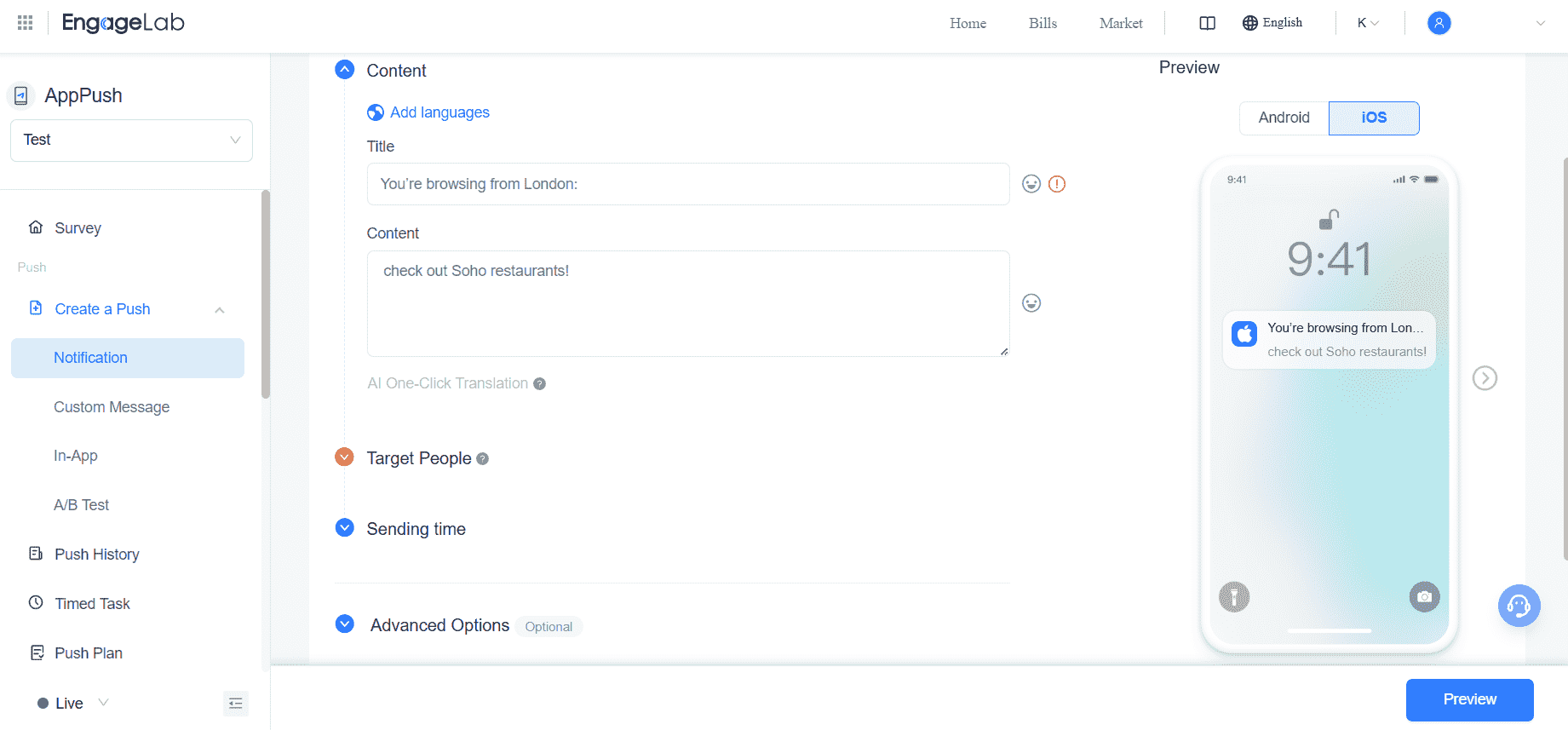
You can even use push notifications for geotargeting purposes. By leveraging geolocation, you can send hyper-relevant messages to users in your area. This type of push notification message example is mostly used by brands in the hospitality industry.
Examples:
- Android: "Welcome to San Francisco �. Explore exclusive local deals near you."
- iOS: "You're near our partner restaurant. Show this message to get a free appetizer."
- Web Push: "You're browsing from London: check out Soho restaurants."
- Mobile App: "Arrived at the airport? Book your airport transfer in one click."
#7 Transactional & Security Notifications

Beyond engagement, push notifications can also handle some critical communications for your company. More specifically, you can use them in scenarios where security and payment are concerned. This is a strategy most suited for SaaS platforms that often have implemented auto-renewal.
Examples:
- Web Push: "Your payment of $199 was processed successfully."
- Mobile App: "Suspicious login attempt detected from a new device. Secure your account now."
- Android: "Subscription renewal successful, thank you for staying with us ✨"
- iOS: "Your one-time verification code is 483729. Valid for 5 minutes."
Beyond Push Notification Examples – Best Practices
Sending a message is easy, especially when you have the right mobile app push notification example to reference. However, sending a notification that yields the best results requires a well-crafted strategy. In this section, we are focusing on the best practices and mistakes to avoid for optimizing push performance.
Best Practices for Improving CTR
#1 Personalization
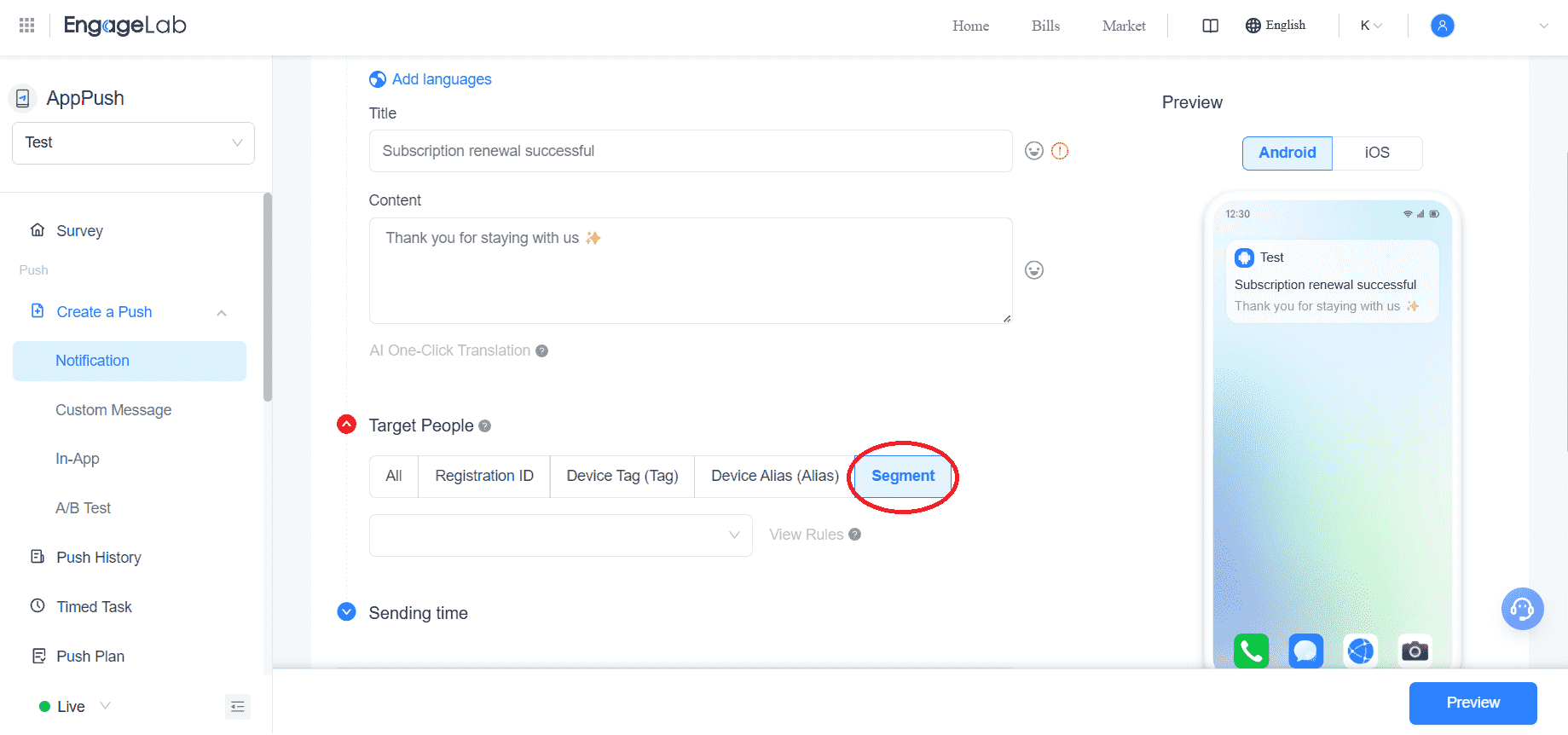
Personalization is critical in your business communications, and this is all the more true for push notifications. For instance, you can use names, past behavior, or preferences to send highly relevant messages to the right users. EngageLab supports advanced audience segmentation for personalization at scale. Then, you can simply select the segment you wish to target when you are creating your notification.
#2 Urgency & Copywriting
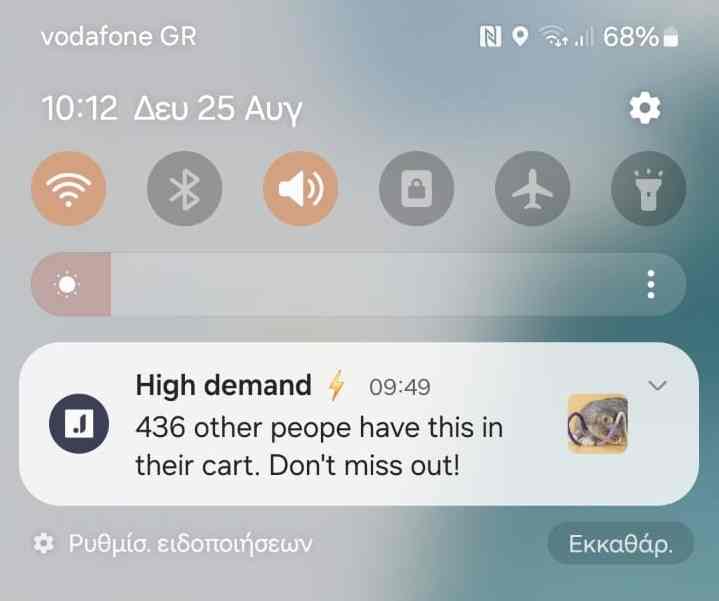
In your Android push notification example, every word matters. Create FOMO without overwhelming your audience by focusing on copywriting that is catching but not pushy. In EngageLab, you can even add emojis to boost this emotional trigger.
#3 Clear Value Proposition
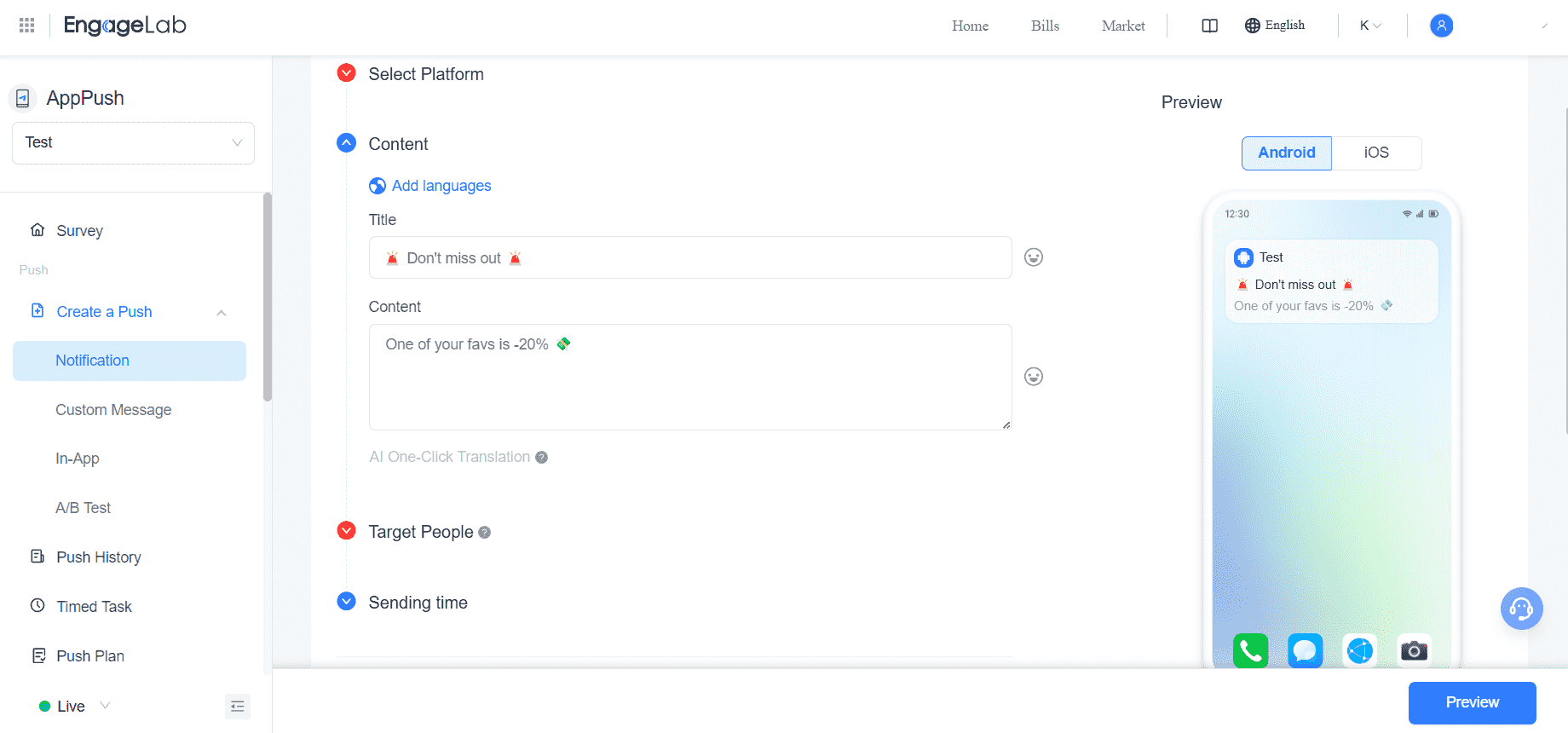
Always remember that your audience will see your notifications on the go. For this reason, they should go straight to the point and offer something of value. A great tip is to answer the question"What's in it for me?" from the perspective of the recipient. EngageLab allows you to preview your notification so that you can evaluate how clear and concise it is.
#4 A/B Testing
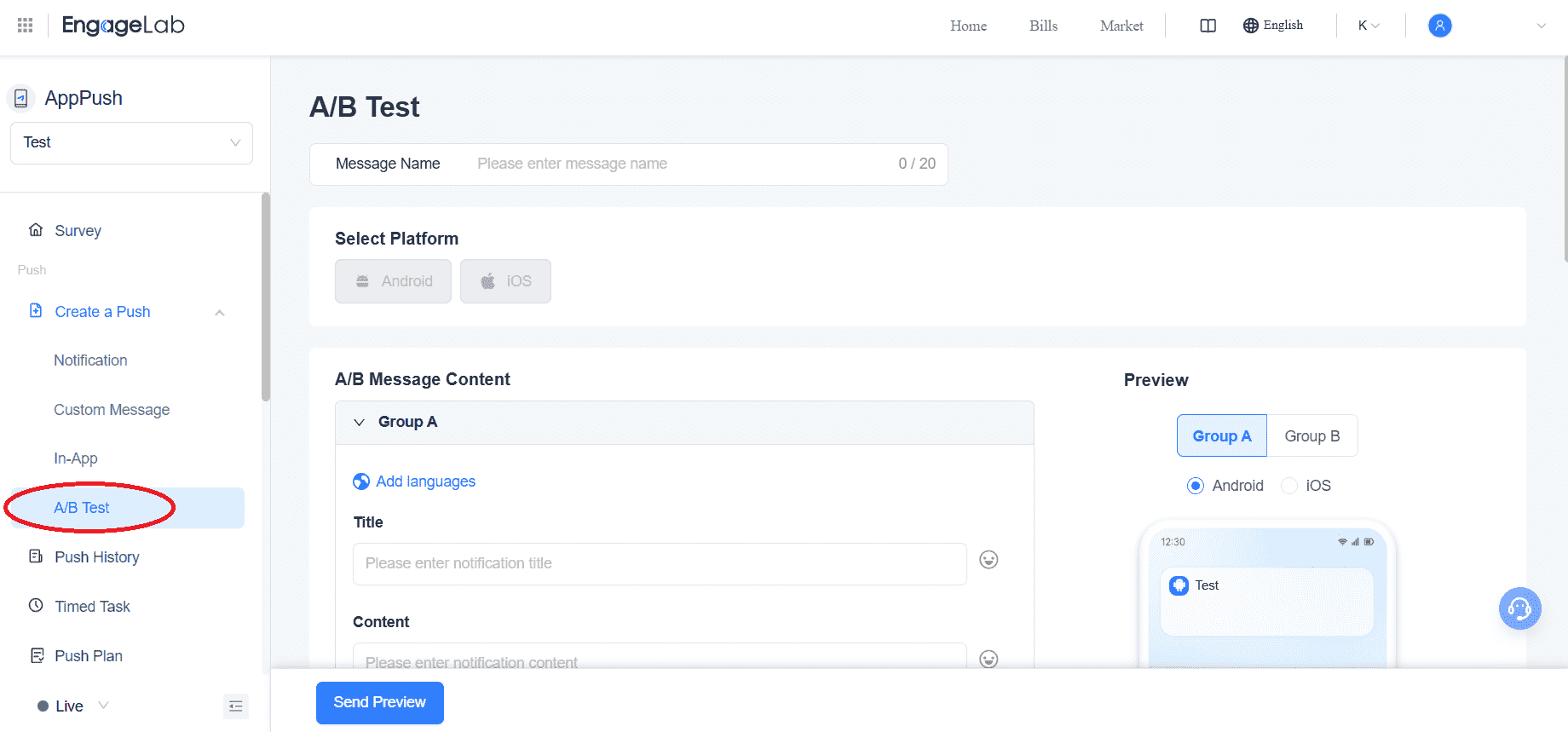
As you delve into more and more examples, you will notice that not all messages perform the same. With A/B testing, you can test variations of headlines, timing, and CTA placement to find out the ideal combination for your audience. EngageLab offers built-in A/B testing tools for push notifications by going to Create a Push > A/B Test on the sidebar.
Common Mistakes to Avoid in a Push Notification Example
-
Mistake1
Sending Too Many Notifications
Bombarding users with daily or irrelevant notifications causes notification fatigue. When this happens, many users will likely opt out, thus missing all of your future communications.Solution: Limit notifications to meaningful events or high-value updates. -
Mistake2
Using Generic, Non-Personalized Messages
Generic notifications often feel irrelevant and lead to low engagement. In addition to this, the user is less likely to click or tap on your CTA.Solution: Personalize your messages by using the user's name, location, or past activity, and segment your audience. -
Mistake3
Ignoring Time Zones and User Context
A perfectly written mobile app push notification example loses impact if it arrives at 3 AM. In fact, it might even be the cause for irritation toward your brand.Solution: Schedule your messages based on the user's local time zone. -
Mistake4
Not Optimizing for Different Platforms
Sending the same message without adaptation means wasted opportunities, as push notification behavior varies across platforms.Solution: Tailor your copy and payloads to each system. Before sending your messages, test a push notification message example to see how it will be displayed on each device.
From a Push Notification Example to Implementation Across Platforms
Overview of Technical Implementation
Now, we have answered what is an example of a push notification. However, this type of message isn't as simple as it looks for developers, as it relies on complex infrastructure and delivery systems. And each platform has its own architecture, rules, and developer requirements. For instance, many developers are looking for an iOS push notification example code to implement them.
In this section, we will briefly touch upon these technical elements:
✨Web Push Notifications✨
Technology: Based on the Push API.
Key Steps:
- The website asks the user for permission, usually via a pop-up message.
- The browser generates a subscription object with an endpoint and cryptographic keys.
- This subscription is stored on your server or push service provider.
Advantages: Works without a native app, supports re-engagement even if the user is not on the website.
Limitations: Dependent on browser compatibility, some restrictions on Safari.
✨Android Push Notifications✨
Technology: Powered by Firebase Cloud Messaging (FCM).
Key Steps:
- The app requests a device token from FCM.
- Server sends notification payloads to FCM using this token.
- FCM delivers the push to the Android device's notification tray.
Advantages: Supports rich media notifications, silent messages, and advanced scheduling.
Limitations: Battery optimization and OS restrictions.
✨iOS Push Notifications✨
Technology: Powered by Apple Push Notification service (APNs).
Key Steps:
- iOS app registers with APNs to get a device token.
- Server sends notification payloads to APNs with the token.
- APNs deliver the message to the device, ensuring strict compliance with Apple's rules.
Advantages: Secure, highly reliable delivery, supports badges, sounds, and interactive actions.
Limitations: Requires explicit user permission, payload size limited to 4KB, stricter delivery rules than Android.
Cross-Platform Differences & Considerations – Comparative Table
| Aspect | Web Push Notification | Android Push Notification | iOS Push Notification |
|---|---|---|---|
| Permission Request Strategy | Browser prompt asks for permission directly | Usually granted on app install | Explicit opt-in required, stricter rules |
| Message Format | Title, body, URL, optional image | Rich media supported (images, actions) | JSON payload with aps dictionary |
| Limitations | Dependent on browser support | Background restrictions on some OS versions | Payload size limit (4KB), strict delivery |
| Unique Features | Works without app install | Deeper integration with Android systems | Custom sounds, badges, iOS-specific styles |
Turning the Push Notification Example into Business Impact
The right push notification example is more than a typical business communication. This strategic tool can dramatically influence user engagement, retention, and revenue. Regardless of the industry you are in, you can make the most of your push notification strategy with EngageLab and its advanced services.
Ready to take your notifications to the next level? Create your EngageLab account for free!


